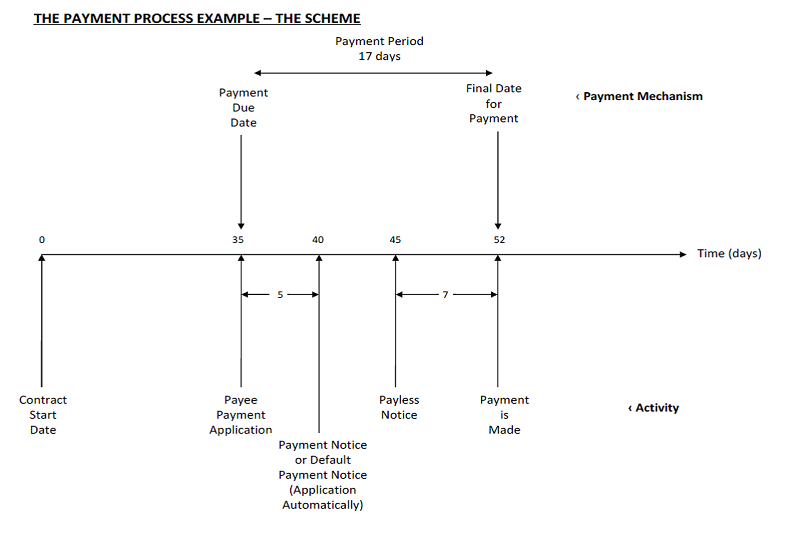The Construction Industry is well known for poor payment practices. “Not getting paid on time” was voted top in our recent poll of most annoying / commonly occurring irritations. Whether you are a subcontractor or a main contractor, you have probably experienced problems getting paid at some point. It is therefore important to properly understand the payment process and how you can improve your chances of getting paid.
The Housing Grants, Construction and Regeneration Act 1996 (“the HGCRA”) introduced statutory rights to payment in Construction Contracts to improve payment practices within the industry. Then the Local Democracy, Economic Development and Construction Act 2009 made further changes leading to the system in place now.
Every Construction Contract must now have an adequate payment process consisting of the following elements:
- Mechanism for calculating the sum due;
- Payment due date – this is actually the date up to which the work is valued;
- Payment period – the time between the payment due date and the final date for payment;
- Final date for payment – the date by which the payment must be made.
These elements are supported by payment notices and payless notices.
It is important to remember that the very first step in ensuring you get paid is to make sure the (sub)contract is in place and you understand the payment process. Then you need to understand the payment notices.
Application for Payment
Taking a proactive approach is a good start. Even if there is no requirement for the issue of applications for payment within the (sub)contract, you should still issue one in advance of, and valued up to, the Payment Due Date. It should include details of how the sum was calculated.
Payment Notice
The payment notice must be issued by the payer not later than 5 days after the Payment Due Date. The payment notice must detail the sum the payer considers to be due and how this was calculated. This sum is called the notified sum and is then due for payment on the final date for payment.
If the payer fails to issue their payment notice, then depending on the wording of the (sub)contract, either your application for payment becomes the default payment notice, or you need to issue a default payment notice. The sum detailed in the default payment notice then becomes the notified sum and is due for payment on the final date for payment.
Payless Notice
Unfortunately, this is not the end of it. The payer still has the opportunity to issue a payless notice detailing the amount they consider to be due. The default period for issuing a payless notice under the Scheme for Construction Contracts is not later than 7 days before the final date for payment, although this can be a lesser period as agreed in the (sub)contract.
As with the other types of notice, the payless notice must detail how the sum was calculated then the sum becomes due on the final date for payment.
Example Payment Process

Image by Arbicon
Conclusion
There are numerous pitfalls to the payment processes in the Construction Industry, but the process should lead to fair payments if followed correctly. When agreeing the terms of the contract, it is very important to make sure you understand the payment terms so that you can be prepared and proactive in your approach. Make sure you confirm the following:
- If, and when, applications for payment must be submitted;
- What the payment due dates are;
- What the process is for default payment notices should the payer fail to issue their payment notice on time;
- What the final dates for payment are;
- When payless notices must be issued to be valid.
If you know all this, and you issue your applications for payment on time, you are in the best position to ensure you get paid for the works completed. Unfortunately it doesn’t always lead to correct payments on time, but the HGCRA also introduced a statutory right to adjudication in Construction Contracts, but that is a topic for another article.
